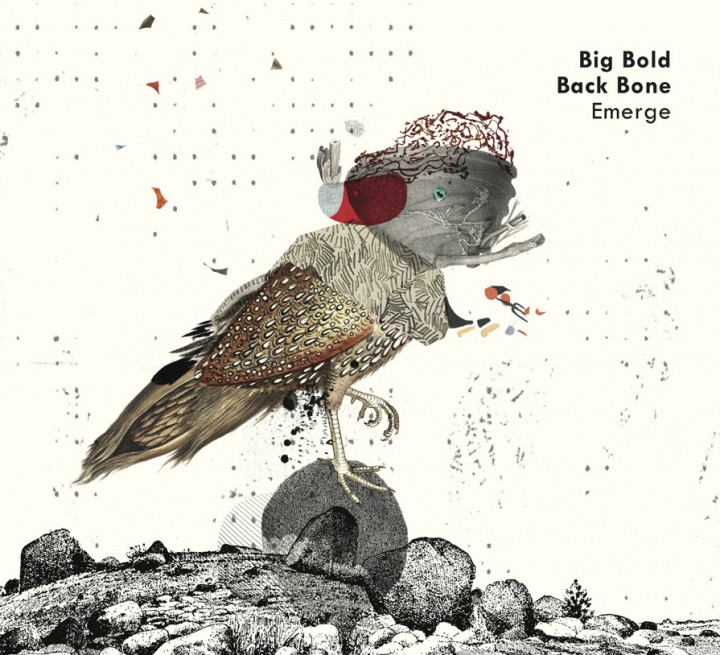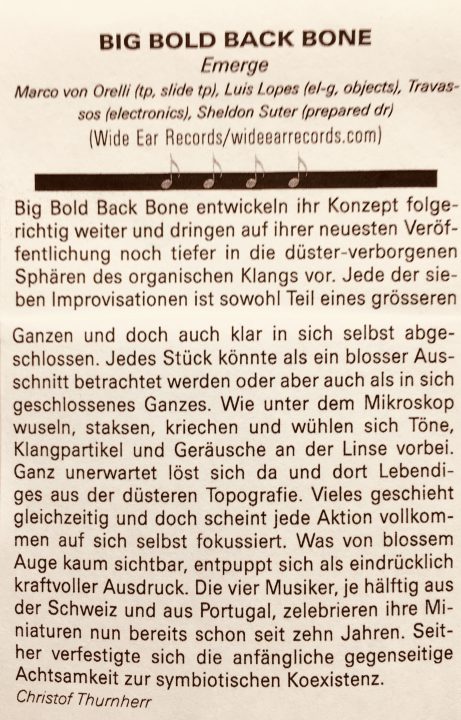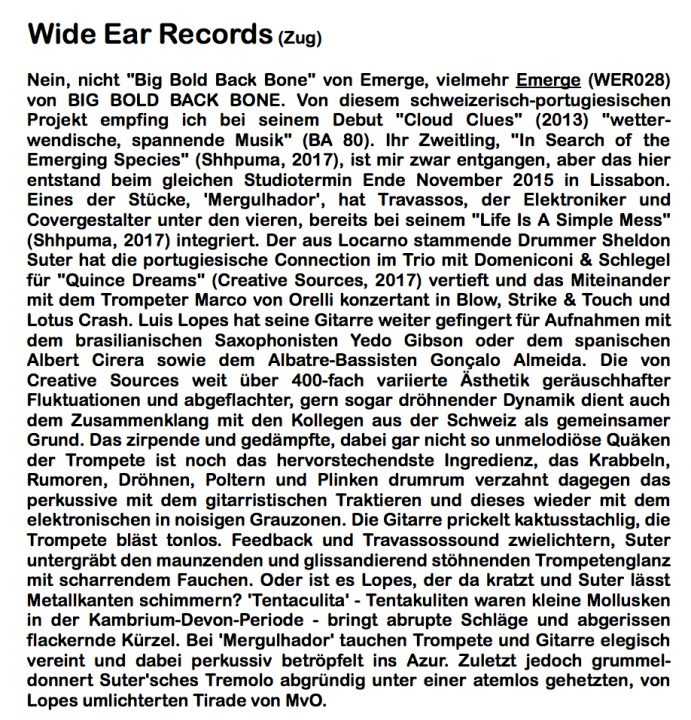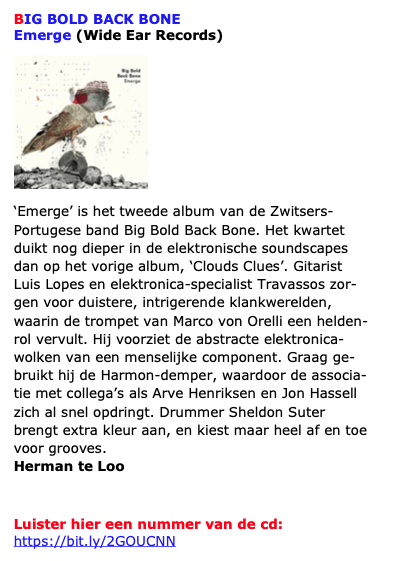
By Derek Stone
Emerge is sure to entrance fans of Big Bold Back Bone’s previous album, and it’s likely to win new fans as well. While it is by no means a turn towards accessibility, it is more digestible – perhaps due to the choice by the band to tackle shorter, more concise movements. Despite these “bite-sized” pieces, however, there is a sense of cohesion underlying the individual tracks, along with a sensation that you are being propelled forward by some ineluctable current. At the end, you may not feel that you’ve reached any destination at all – but you’re likely to find that the ride was well worth it.




